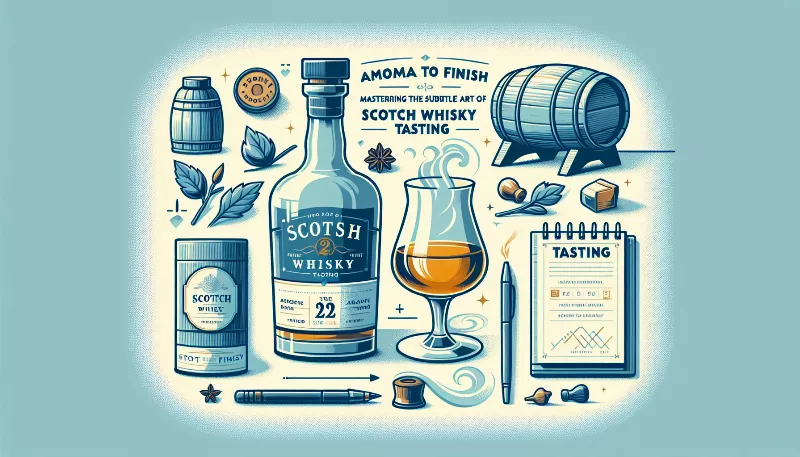Savor the Flavor: A Beginner's Guide to Tasting Scotch Whisky
Embark on a whisky adventure! Learn the art of scotch tasting with our beginner's guide. Discover flavors & refine your palate. Taste the heritage!

Welcome to the World of Scotch Whisky
Embarking on a journey into the rich and complex world of Scotch whisky can be both exhilarating and a tad daunting. But fear not, dear beginner! With each sip, you'll uncover layers of history, craftsmanship, and flavor that have been meticulously cultivated in the rolling hills of Scotland for centuries. So, grab your favorite glass, and let's dive into the art of tasting Scotch whisky with enthusiasm and curiosity.
Understanding Scotch Whisky
Before we swirl, sniff, and sip, it's essential to understand what makes Scotch whisky unique. This storied spirit is made from malted barley or grain, water, and yeast, and it must be aged in oak barrels for at least three years in Scotland. The result? A beverage that's as varied as the Scottish landscape, with single malts, blends, and various regional styles waiting to tantalize your taste buds.
Setting the Stage for Tasting
To truly appreciate Scotch whisky, you'll need the right environment and tools. Choose a quiet place free from strong odors, which could interfere with your sensory experience. A tulip-shaped glass, often called a Glencairn, is ideal for concentrating the aromas. Ensure your whisky is at room temperature to release its full spectrum of flavors.
The Tasting Process
Observation: Begin by examining the color of the whisky, which can range from pale straw to deep amber. The hue can give you clues about the age and types of casks used during maturation.
Nosing: Gently swirl the whisky in your glass to release its bouquet. Take a moment to inhale the aromas with your mouth slightly open. You might detect notes of fruit, peat, wood, or spice, each telling a story of its origin and aging process.
Tasting: Take a small sip and let it coat your tongue. Try to identify the primary flavors—sweet, salty, bitter, or sour—and then look for secondary notes like chocolate, vanilla, citrus, or smoke. The complexity of Scotch whisky is bound to surprise you.
Finish: After swallowing, pay attention to the aftertaste, or 'finish.' It can be short and sweet or long and warming, leaving a lasting impression that beckons you back for another dram.
Developing Your Palate
Like any skill, tasting whisky takes practice. Keep a journal of your tastings, noting the characteristics and your personal impressions. Over time, you'll start to discern the subtle differences between regions, distilleries, and aging methods. Don't be afraid to experiment with water or ice, as a few drops can open up new flavors, while ice can dull some of the complexities.
Joining the Community
Scotch whisky isn't just a drink; it's a culture. Connect with fellow enthusiasts through tastings, festivals, and online forums. Sharing experiences and recommendations will deepen your appreciation and knowledge of this beloved spirit.
As you continue your exploration of Scotch whisky, remember that the most important aspect is enjoyment. Whether you're savoring a peaty Islay malt or a smooth Speyside blend, each glass is an invitation to explore, learn, and delight in the flavors of Scotland. Slàinte mhath!









